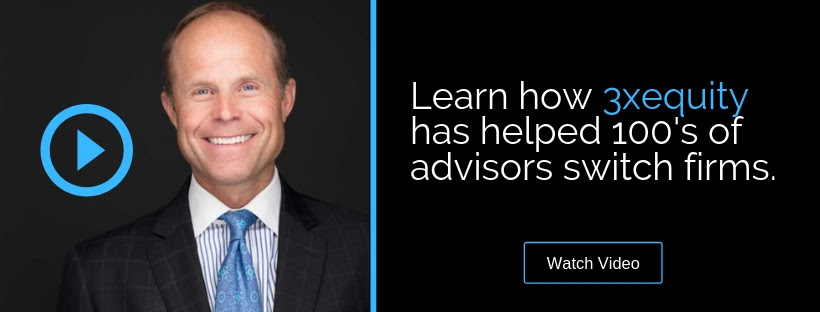In 2022, the RIA and BD industry experienced growth of 2.1%, boasting +450,000 investment advisors managing an impressive $514.1 trillion in assets for approximately 91.9 million clients.
The industry’s expansion indicates the increasing reliance on investment advisors for managing diverse portfolios and navigating the intricate world of financial markets.
Now, envision a scenario where even a fractional percentage of these substantial assets finds its way into a spot crypto Exchange-Traded Fund (ETF), a financial product seamlessly aligning with the existing RIA framework. While the shift won’t happen overnight, and advisors won’t hastily allocate all their assets into this new avenue, the approval of a Bitcoin ETF, for instance, signifies the unlocking of floodgates to a massive opportunity set for both assets and participants.
In the current landscape, it’s crucial to acknowledge that many investors globally seek a conservative allocation to crypto, driven by the potential for significant upside gains. For them, exposure to crypto is a modest segment of their overall investment pie, perceived as one of the riskier and more volatile components within their portfolio—undeniably true when viewed in contrast to traditional investment options.
Those deeply entrenched in the crypto space may find their perception of risk and expected returns distorted. However, venturing beyond our crypto echo chamber reveals a vast population that desires simplicity. The majority of investors aren’t inclined towards self-custody, constant fund movement, or mastering blockchain transactions. Their preference lies in a set-and-forget approach, anticipating the value of their investment to ascend steadily over time.
While the dream persists of a future where blockchain solutions become widespread due to their undeniable advantages—superior speed, cost-effectiveness, and efficiency—our focus remains on the present. Crypto ETFs, though seemingly mundane to some, bring in participants whose engagement is highly meaningful for the market. Beyond the influx of capital, mature and vibrant markets thrive on diverse participants adopting varied approaches to engagement.
This marks just the initial phase of a broader trend. Embracing traditional adoption, even if perceived as suboptimal in certain crypto circles—spot ETFs being compared to putting training wheels on a Ferrari—is essential. Traditional adoption signals widespread attention and active involvement in the crypto space. As more individuals commit capital, they become inherently incentivized to delve deeper into the intricacies of this dynamic market. It’s a welcome evolution that promises broader understanding and engagement.
In essence, the approval of Bitcoin ETFs and similar financial instruments heralds a significant turning point, opening doors for a new wave of participants within the established financial advisory realm. As these traditional financial players explore the potential of crypto assets, it sets the stage for a more inclusive and informed adoption of blockchain technology and cryptocurrencies. It’s a journey worth embracing, ushering in a wave of curiosity and exploration that could redefine the landscape of financial services in the years to come.
The industry’s expansion indicates the increasing reliance on investment advisors for managing diverse portfolios and navigating the intricate world of financial markets.
Now, envision a scenario where even a fractional percentage of these substantial assets finds its way into a spot crypto Exchange-Traded Fund (ETF), a financial product seamlessly aligning with the existing RIA framework. While the shift won’t happen overnight, and advisors won’t hastily allocate all their assets into this new avenue, the approval of a Bitcoin ETF, for instance, signifies the unlocking of floodgates to a massive opportunity set for both assets and participants.
In the current landscape, it’s crucial to acknowledge that many investors globally seek a conservative allocation to crypto, driven by the potential for significant upside gains. For them, exposure to crypto is a modest segment of their overall investment pie, perceived as one of the riskier and more volatile components within their portfolio—undeniably true when viewed in contrast to traditional investment options.
Those deeply entrenched in the crypto space may find their perception of risk and expected returns distorted. However, venturing beyond our crypto echo chamber reveals a vast population that desires simplicity. The majority of investors aren’t inclined towards self-custody, constant fund movement, or mastering blockchain transactions. Their preference lies in a set-and-forget approach, anticipating the value of their investment to ascend steadily over time.
While the dream persists of a future where blockchain solutions become widespread due to their undeniable advantages—superior speed, cost-effectiveness, and efficiency—our focus remains on the present. Crypto ETFs, though seemingly mundane to some, bring in participants whose engagement is highly meaningful for the market. Beyond the influx of capital, mature and vibrant markets thrive on diverse participants adopting varied approaches to engagement.
This marks just the initial phase of a broader trend. Embracing traditional adoption, even if perceived as suboptimal in certain crypto circles—spot ETFs being compared to putting training wheels on a Ferrari—is essential. Traditional adoption signals widespread attention and active involvement in the crypto space. As more individuals commit capital, they become inherently incentivized to delve deeper into the intricacies of this dynamic market. It’s a welcome evolution that promises broader understanding and engagement.
In essence, the approval of Bitcoin ETFs and similar financial instruments heralds a significant turning point, opening doors for a new wave of participants within the established financial advisory realm. As these traditional financial players explore the potential of crypto assets, it sets the stage for a more inclusive and informed adoption of blockchain technology and cryptocurrencies. It’s a journey worth embracing, ushering in a wave of curiosity and exploration that could redefine the landscape of financial services in the years to come.





